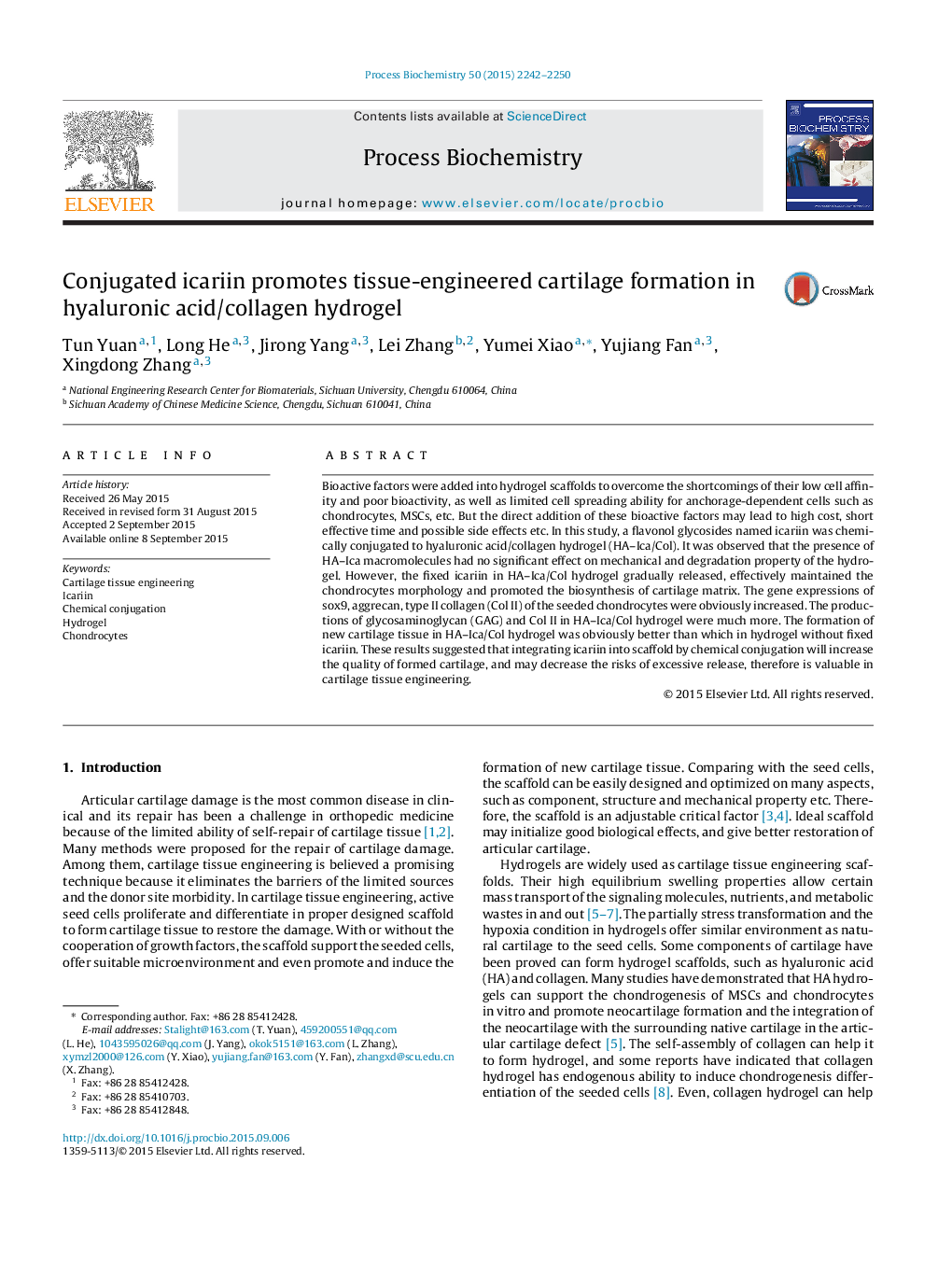| کد مقاله | کد نشریه | سال انتشار | مقاله انگلیسی | نسخه تمام متن |
|---|---|---|---|---|
| 34219 | 45010 | 2015 | 9 صفحه PDF | دانلود رایگان |

• The chemical conjugation of icariin on hydrogel can control the release of it.
• The chemical conjugated icariin can promote the formation of new cartilage.
• Fix of the flavonol glycosides in scaffolds may decease the risks of side effects.
• Icariin may be the substitute of growth factors in cartilage tissue engineering.
Bioactive factors were added into hydrogel scaffolds to overcome the shortcomings of their low cell affinity and poor bioactivity, as well as limited cell spreading ability for anchorage-dependent cells such as chondrocytes, MSCs, etc. But the direct addition of these bioactive factors may lead to high cost, short effective time and possible side effects etc. In this study, a flavonol glycosides named icariin was chemically conjugated to hyaluronic acid/collagen hydrogel (HA–Ica/Col). It was observed that the presence of HA–Ica macromolecules had no significant effect on mechanical and degradation property of the hydrogel. However, the fixed icariin in HA–Ica/Col hydrogel gradually released, effectively maintained the chondrocytes morphology and promoted the biosynthesis of cartilage matrix. The gene expressions of sox9, aggrecan, type II collagen (Col II) of the seeded chondrocytes were obviously increased. The productions of glycosaminoglycan (GAG) and Col II in HA–Ica/Col hydrogel were much more. The formation of new cartilage tissue in HA–Ica/Col hydrogel was obviously better than which in hydrogel without fixed icariin. These results suggested that integrating icariin into scaffold by chemical conjugation will increase the quality of formed cartilage, and may decrease the risks of excessive release, therefore is valuable in cartilage tissue engineering.
Figure optionsDownload as PowerPoint slide
Journal: Process Biochemistry - Volume 50, Issue 12, December 2015, Pages 2242–2250